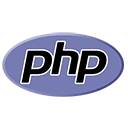The rollout of 5G technology promises to revolutionize the way we connect and interact with the digital world. Building applications that take full advantage of 5G's speed and capabilities is an exciting opportunity. In this guide, we'll explore how PHP can be used for developing next-generation applications and provide a simplified example of a 5G-enabled web application.
1. Introduction to 5G Technology
5G is the fifth generation of wireless technology, offering significantly faster data speeds, lower latency, and greater connectivity. It opens up new possibilities for applications that require real-time interactions, high-definition video streaming, and IoT device management.
2. Key Concepts and Techniques
2.1. Low Latency Applications
5G's low latency enables real-time applications, such as augmented reality (AR), virtual reality (VR), and telemedicine. PHP can be used to develop the back-end services for these applications.
2.2. High-Definition Multimedia
5G supports high-quality video streaming and immersive multimedia experiences. PHP can be used to build media-rich web applications that take advantage of these capabilities.
3. Example: Building a 5G-Enabled Web App with PHP
Here's a simplified example of building a web application that leverages 5G technology to deliver high-definition video content. Please note that this is a highly simplified demonstration and not suitable for a production application.
// PHP code for a simplified 5G-enabled web app (not suitable for real 5G applications).
// Simulated video streaming endpoint.
$videoEndpoint = "https://example.com/5g-video.mp4";
// Simulated PHP code for serving the video content.
echo "4. Conclusion
Leveraging 5G for next-generation applications is an exciting field with numerous possibilities. While the example above is highly simplified, it illustrates the concept of building a 5G-enabled web application with PHP. Real-world 5G applications involve sophisticated development, network optimization, and the integration of low-latency and high-bandwidth features to deliver an exceptional user experience.

